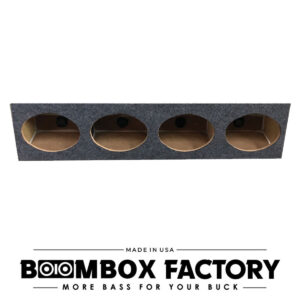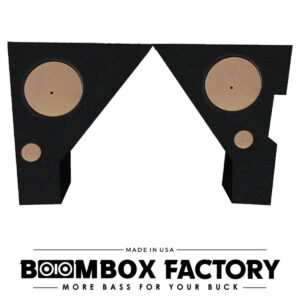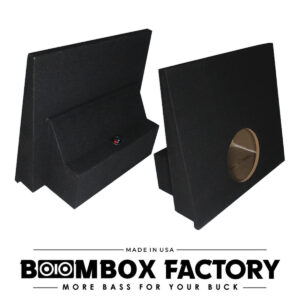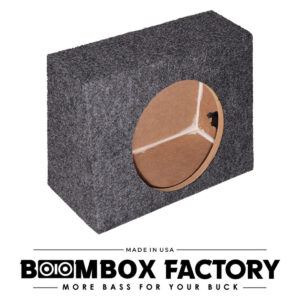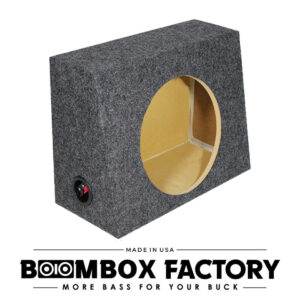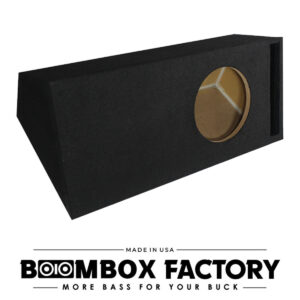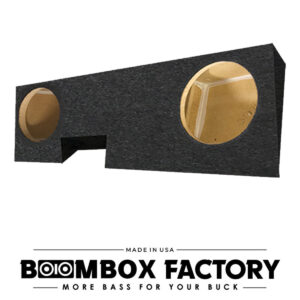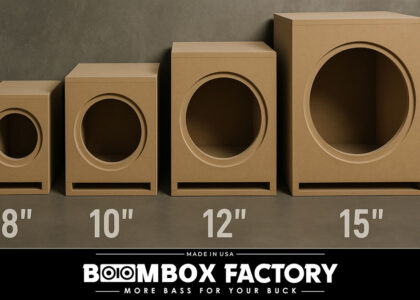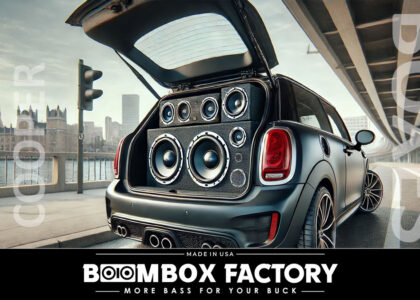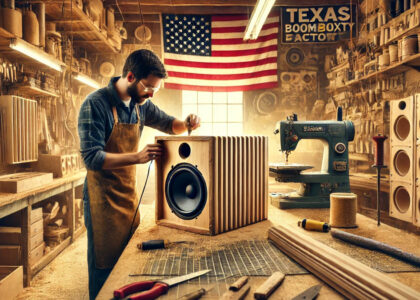Subwoofer Box 12 Inch: The Ultimate Guide to Insane Bass in Your Car
A subwoofer box 12 inch is the heart of serious car audio. If you want that deep, window-rattling bass, it’s not just about the subwoofer — the box makes all the difference. Whether you’re installing one 12-inch subwoofer or going for a dual setup, choosing or building the right box means everything.
In El Paso, TX, Boombox Factory has become a go-to place for custom enclosures. Their single or dual 12″ subwoofer configuration is designed to deliver balanced, thunderous bass that doesn’t distort, no matter the volume. If you’re building your dream sound system, this is where to start.
Subwoofer Box 12 Inch Specs and Reference Info
Below is key data you’ll need before buying or building your 12-inch subwoofer box. This table includes configuration options, recommended volume, and other important factors. It can be easily inserted into WordPress.
| Feature | Specification |
|---|---|
| Subwoofer Size | 12 Inches |
| Box Configuration | Single or Dual |
| Type | Sealed, Ported, Bandpass |
| Ideal Volume (Sealed) | 1.25 – 1.75 cu. ft. |
| Ideal Volume (Ported) | 1.75 – 2.5 cu. ft. |
| Box Material | MDF (Medium-Density Fiberboard) |
| Wall Thickness | 3/4″ to 1″ |
| Origin | Commonly used in Car Audio Systems |
| Performance | Deep, Tight Bass with Correct Box Tuning |
| Reference | Boombox Factory – El Paso TX |
Why Box Design Matters for 12" Subwoofers
You can drop a 12-inch sub into any box, but that won’t guarantee good sound. The enclosure affects airflow, sound waves, resonance, and efficiency. Without the right box, your subwoofer won’t hit as hard — or sound clean.
Poorly made or mismatched boxes lead to distortion, muddy bass, or even blown subs. A properly tuned box will give you tight, responsive, and loud bass — exactly what you’re after.
Sealed vs Ported Subwoofer Box 12 Inch: Which One Should You Choose?
Sealed Box
Tight, accurate bass
Requires more power
Smaller in size
Best for rock, jazz, and detailed audio
Ported Box
Louder, deeper bass
More efficient with less power
Larger size
Ideal for hip-hop, EDM, bass-heavy music
Want volume and rumble? Go ported. Want clean punch and clarity? Go sealed. If you’re into competition-level SPL (Sound Pressure Level), consider bandpass enclosures, but they’re harder to design.
Top Box Designs for 12" Subwoofers
Here are some tried-and-tested enclosure styles that work great for 12-inch subwoofers:
Standard Sealed Box (1.25 cu. ft.) – Great for tight bass and minimal space.
Slot Ported Box (2.0 – 2.5 cu. ft.) – Delivers booming bass, perfect for trunk installs.
Dual Chamber Bandpass Box – High SPL output but limited frequency range.
Custom Fiberglass Box – Designed to fit vehicle curves; stylish but expensive.
Down-Firing Enclosure – Protects subwoofer and works well under seats or in SUVs.
Materials Matter: MDF vs Plywood vs Fiberglass
MDF (Medium-Density Fiberboard): The most used material. Strong, dense, and cheap.
Plywood: Lighter but can vibrate more. Use birch if going this route.
Fiberglass: Custom fit and lightweight but costs more and needs advanced skills.
Most pros go with 3/4-inch MDF for its reliability and acoustic performance.
The Power Game: Matching Your Amp to Your Subwoofer Box
Even the best box fails if your amp and sub don’t match. Check the RMS power handling of your 12″ sub and get an amp that delivers power close to that rating. Underpowering creates distortion. Overpowering without headroom can blow your speaker.
If you’re using dual 12-inch subs, make sure your amp supports 2-ohm or 1-ohm stable loads, depending on your wiring configuration.
Build vs Buy: Which Way to Go?
Building Your Own Box
Pros:
Cheaper
Fully customizable
More satisfying
Cons:
Requires tools, time, and skill
Mistakes ruin sound
Buying a Prebuilt Box
Pros:
Easy plug-and-play
Professionally tuned
Warranty included
Cons:
More expensive
Might not fit your trunk or space perfectly
If you’re in El Paso, Boombox Factory offers custom builds tailored to your vehicle and audio goals. You can get single or dual 12″ configurations tuned to your exact preferences.
Common Mistakes to Avoid
Wrong internal volume – Messes up frequency response.
Thin material – Causes rattles and vibrations.
Poor sealing – Air leaks kill your bass.
Subwoofer facing wrong direction – Placement affects sound stage.
Always measure your space and check your sub’s recommended enclosure specs before making or buying a box.
How to Tune a Ported Subwoofer Box 12 Inch
Tuning is about setting the box’s resonant frequency using the port’s length and width. Most 12-inch subwoofer boxes are tuned to 32–36 Hz for deep bass. Use a subwoofer box calculator or online tuning tool to find the right dimensions.
FAQ: Subwoofer Box 12 Inch
What’s the best box for a 12 inch subwoofer?
A ported box around 2.0–2.5 cu. ft. gives the best loud bass. For cleaner sound, go with a sealed box of about 1.25 cu. ft.
Can I install two 12 inch subwoofers in one box?
Yes, you can. Just make sure the box is large enough — typically 4.0–5.0 cu. ft. total — and internally braced to handle the pressure.
Should I face the subwoofer forward or backward?
It depends on your vehicle and sound goals. In trunks, subs often sound louder when facing backward or downward due to wave reflections.
How thick should my subwoofer box be?
Use 3/4-inch MDF at minimum. For big bass systems, use 1-inch or double layers for better strength.
What’s the best placement for my subwoofer box?
Trunk corners or under seats are common. Try different positions and see which gives the strongest bass inside the cabin.
Final Thoughts
If you’re serious about sound, the subwoofer box 12 inch is where your build starts. A great sub in a bad box is wasted. A decent sub in a well-built box can shake your windows. Choose the right box type, match your amp, and build (or buy) with quality materials.
For custom subwoofer boxes that deliver real bass, check out trusted shops like Boombox Factory in El Paso, TX. Their experience and builds show just how much box design can change the game.



